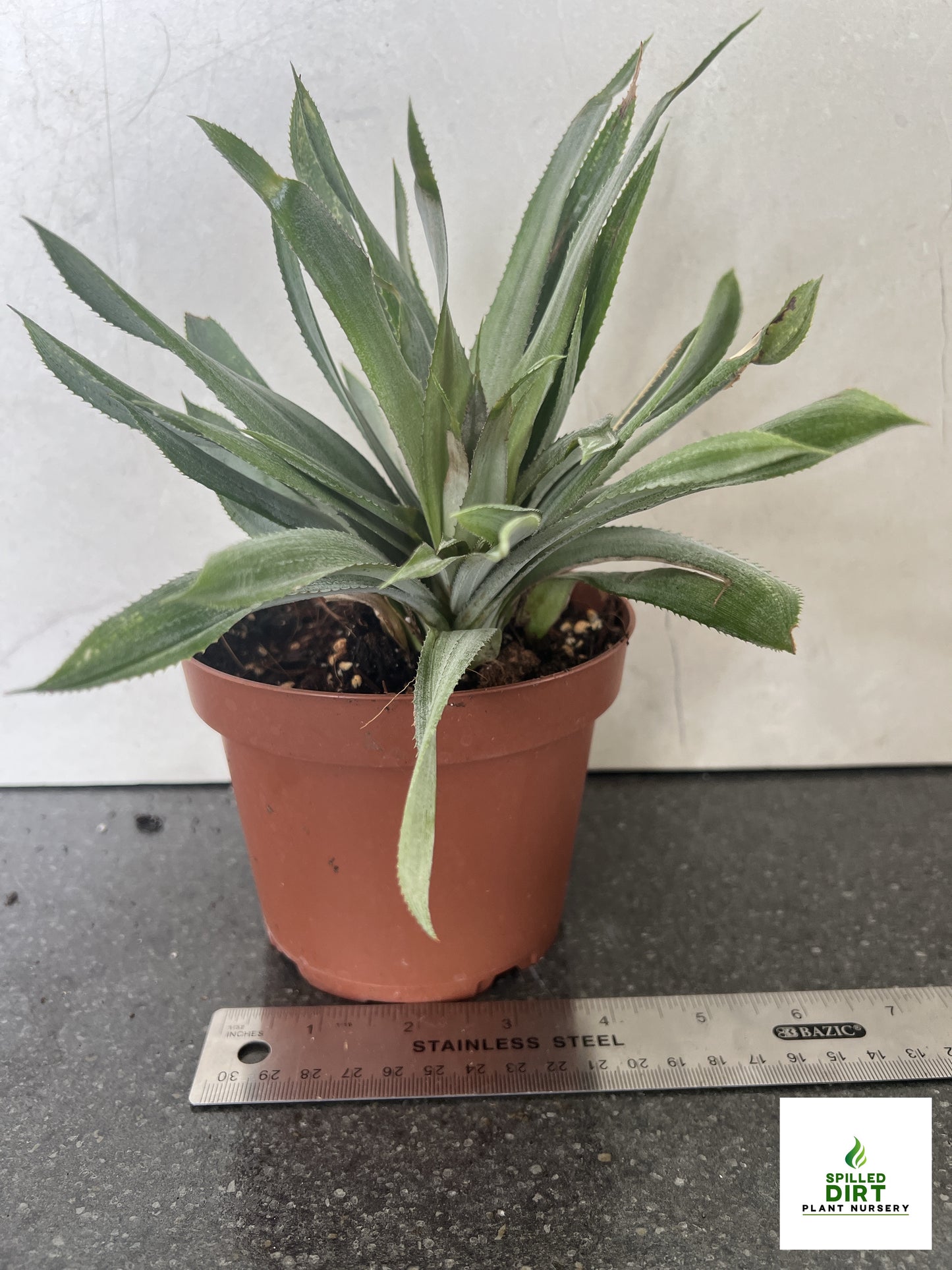Bighead pineapple
Bighead pineapple
Couldn't load pickup availability
Botanical Name: Ananas comosus 'Capezona'Native Region/Environment: Little information is available but this was once an abundant pineapple species in the Caribbean, particularly Puerto Rico. Cultivation in Puerto Rico is documented pre-Columbus but this species was displaced beginning in the late 19th century with more commercial Hawaiian cultivars. "Cabezona", presumed to be the same, is a common species in Mexico. Sun/Light: Full-part sun Temperature: Indoors will require minimum 50F temperatures. Outdoors: USDA Hardiness zone 10-12 Water: Drought tolerant once establish, prefers moist, but not soggy soils. Over watering and over fertilizing are the easiest ways to kill a coveted pineapple plant. so feed quarterly and water as needed to prevent water logged soils. Use a chunky soil mix to help prevent over watering and root rot. Soil: Nutrient rich, fast draining, porous soil. Err to the side of underwatering. Growth Pattern: As with most other bromeliads, a pineapple plant grows from a central, low axis, with stiff leaves that have sharp spines or hooks. Mature Size: 4'-5' width and height. Attributes: A pineapple is a multiple fruit in one-it is the joining of potentially hundreds of pollinated flowers to become a single fruit. It is a very sweet and extremely juicy variety, easily identified by its characteristic large round shape. A fully mature Bighead pineapple can be almost twice the size of a store bought pineapple. Attractor: In the wild, hummingbirds are the primary pollinators, but bees and bats can also be attracted to the flowers. Pot: 4" |
A rare find in the pineapple world of the bromeliad family. Pina Cabezona, called Bighead, was once a dominant species on the island of Puerto Rico and around the Caribbean, but now it is hard to find.
Pineapple plants can feed some, directly from their leaves, as with most bromeliads, as well as with their roots.


